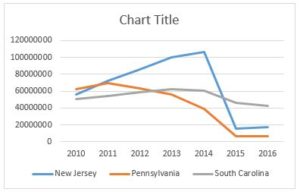On April 1, 2019, CMS implemented a new series of Common Working File (CWF) edits that it stated would better identify ground ambulance transports that were furnished in connection with an outpatient hospital service that would be bundled to the skilled nursing facility (SNF) under the SNF Consolidated Billing regime.
Unfortunately, the implementation of these new edits has been anything but seamless. Over the past few weeks, I have received numerous phone calls, texts, and emails from AAA members reporting an increase in the number of Medicare claims being denied for SNF Consolidated Billing.
This FAQ will try to explain why you may be seeing these denials. I will also try to provide some practical solutions that can: (1) reduce the number of claims denied by the edits and (2) help you collect from the SNFs, when necessary.
Please note that, at the present time, there is no perfect solution to this issue, i.e., there is nothing that you can do to completely eliminate these claim denials. The solutions discussed herein are intended only to minimize the disruption to your operations caused by these denials.
I am new to Medicare ambulance billing. Can you explain what the SNF Consolidated Billing regime is, and how it operates?
Under the SNF Consolidated Billing regime, SNFs are paid a per diem, case-mix-adjusted amount that is intended to cover all costs incurred on behalf of their residents. Federal regulations further provide that the SNF’s per diem payment generally the cost of all health care provided during the beneficiary’s Part A stay, whether provided by the SNF directly, or by a third-party. This also includes the majority of medically necessary ambulance transportation provided during that period. For these purposes, the “Part A Period” refers to the first 100 days of a qualified SNF stay.
However, medically necessary ambulance transportation is exempted from SNF Consolidated Billing (referred to hereafter as “SNF PPS”) in certain situations. This includes medically necessary ambulance transportation to and from a Medicare-enrolled dialysis provider (whether free-standing or hospital-based). Also excluded are ambulance transportations:
- To an SNF for an initial admission;
- From the SNF to the patient’s residence for a final discharge (assuming the patient does not return to that SNF on the same day);
- To and from a hospital for an inpatient admission;
- To and from a hospital for certain outpatient procedures, including, without limitation, emergency room visits, cardiac catheterizations, CT scans, MRIs, certain types of ambulatory surgery, angiographies (including PEG tube procedures), lymphatic and venous procedures, and radiation therapy.
For a fuller description of the SNF Consolidated Billing Regime, including a discussion of when ambulance services may be separately payable by Medicare Part B, I encourage members to consult the AAA Medicare Reference Manual.
Purchase the 2019 Medicare Reference Manual
Can you explain what prompted CMS to implement these new edits?
In 2017, the HHS Office of the Inspector General conducted an investigation of ground ambulance claims that were furnished to Medicare beneficiaries during the first 100 days of a skilled nursing home (SNF) stay. The OIG’s investigation consisted of a review of all SNF beneficiary days from July 1, 2014 through June 30, 2016 to determine whether the beneficiary day contained a ground ambulance claim line. The OIG excluded beneficiary days where the only ambulance claim line related to: (1) certain emergency or intensive outpatient hospital services or (2) dialysis services, as such ambulance transportation would be excluded from SNF Consolidated Billing.
The OIG determined that there were 58,006 qualifying beneficiary days during this period, corresponding to $25.3 million in Medicare payments to ambulance suppliers. The OIG then selected a random sample of 100 beneficiary days for review. The OIG determined that 78 of these 100 beneficiary days contained an overpayment for the associated ambulance claims, as the services the beneficiary received did not suspend or end their SNF resident status, nor was the transport for dialysis. The OIG determined that ambulance providers were overpaid a total of $41,456 for these ambulance transports. The OIG further determined that beneficiaries (or their secondary insurances) incurred an additional $10,723 in incorrect coinsurance and deductibles. Based on the results of its review, the OIG estimates that Medicare made a total of $19.9 million in Part B overpayments to ambulance suppliers for transports that should have been bundled to the SNFs under SNF Consolidated Billing regime. The OIG estimated that beneficiaries (and their secondary insurances) incurred an additional $5.2 million in coinsurance and deductibles related to these incorrect payments.
The OIG concluded that the existing edits were inadequate to identify ambulance claims for services associated with hospital outpatient services that did not suspend or end the beneficiary’s SNF resident status, and which were not related to dialysis. The OIG recommended that CMS implement additional edits to identify such ambulance claims.
The OIG’s report prompted CMS to issue Transmittal 2176 in November 2018. This transmittal instructed the CWF Maintainer and the Medicare Administrative Contractors (MACs) to implement a new series of edits, effective April 1, 2019.
Can you provide a simple overview of how these new CWF edits operate?
Before we turn to the new edits, I think it is important to understand that CMS has had long-standing edits to identify outpatient hospital services that should be bundled to the SNF under SNF PPS. These edits work by comparing the Healthcare Common Procedure Coding System (HCPCS) or Current Procedural Terminology (CPT) codes on the outpatient hospital claim to applicable lists of excluded codes. To the extent the HCPCS or CPT code appears on the applicable list of excluded codes, the outpatient hospital claim will bypass the edit for SNF PPS, and be separately payable by the MAC. To the extent the HCPCS or CPT code on the outpatient hospital claim does not appear on the applicable list of excluded codes, the claim will be denied as the responsibility of the SNF. The new CWF edits for ambulance claims simply extend the existing process one step further, i.e., they compare the ambulance claim to the associated hospital claim.
Conceptually, the new edits “staple” the ambulance claim to the outpatient hospital claim, with our coverage piggybacked on whether the outpatient hospital claim is determined to be bundled or unbundled.
How would I identify a claim that is denied for SNF Consolidated Billing?
Typically, the denial will be evidenced by a Claim Adjustment Reason Code on the Medicare Remittance Advice. The denial will typically appear as an “OA-190” code, with the following additional explanation: “Payment is included in the allowance for a Skilled Nursing Facility (SNF) qualified stay. The “OA” stands for “Other Adjustment,” and is intended to notify you that the SNF is the correct payer. Note: in some instances, the denial may appear as “CO-190” on the remittance advice. However, the effect of the denial is the same, i.e., they are indicating that the SNF is financially responsible for payment.
Frequently, the denial will be accompanied by Remittance Advice Remark Code “N106,” which indicates “Payment for services furnished to Skilled Nursing Facility (SNF) inpatients (except for excluded services) can only be made to the SNF. You must request payment from the SNF rather than the patient for this service.”
I have heard you refer to the new CWF edits as over-inclusive. What do you mean by that?
When CMS elects to implement a new edit to the CWF, it has to make some decisions on how to structure the edit. Two typical decisions that must be made are:
- Will the edit be conditional based on the submission of other Medicare claims? And
- Is the edit designed to be under- or over-inclusive?
For these purposes, a conditional edit is one where the coverage or lack of coverage depends, in part, on the claims submitted by other health care providers that furnished services to the same beneficiary (typically on the same date). As you are probably aware, the Medicare rules for all Part B payments prohibit payment whenever the service has been paid for, directly or indirectly, under Medicare Part A. Thus, all edits for hospital and SNF bundling are conditioned, in part, on the patient’s Part A inpatient status at the time of transport.
By contrast, an unconditional edit is one that operates the same regardless of other types of claims for the same patient. For example, with respect to ambulance claims, the MACs medical necessity edits are unconditional, i.e., they apply to all ambulance claims, regardless of the patient’s inpatient status at a Part A facility. The edits for origin/destination modifiers are another example of an edit that is typically unconditional.
In addition, CMS has to decide whether to make an edit under- or over-inclusive. This is because no edit can be perfectly tailored to be applied to all qualifying claims, but no non-qualifying claims. An “underinclusive” edit is one that is designed to identify the majority – – but not all – – of the claims that should be denied based on the edit criteria. By contrast, an “overinclusive” edit is one that would deny not only all of the qualifying claims, but also some non-qualifying claims.
In many instances related to EMS coverage, the underlying facts and circumstances of the transport are ultimately what determines the coverage. It is frequently difficult – – if not impossible – – to fully describe these circumstances with enough specificity on the electronic claim for CMS to perfectly apply its edits. For that reason, CMS has historically elected to design its ambulance edits to be underinclusive.
Unfortunately, the new SNF edits are both conditional AND overinclusive. To further complicate matters, they are not only conditioned on the claim of a single Part A provider, but two separate Part A providers, i.e., in order for the new edits to work properly, CMS is reliant upon information from both the SNF and the hospital to properly apply its new edits.
I recently received a denial for an emergency transport from an SNF to the hospital for an emergency room visit. I thought emergency ambulance transports were excluded from SNF PPS?
They are. The denial was likely the result of your claim being submitted prior to Medicare’s receipt of the associated outpatient hospital claim.
As noted above, the new edits are both conditional and overinclusive. In this context, they are designed to deny the ambulance claim UNLESS there is a hospital outpatient claim for that same patient with the same date of service. If there is no hospital outpatient claim on file when your ambulance claim hits the system, the edit indicates that the MAC should deny your claim for SNF PPS.
OK, that makes some sense. Does that mean I have to appeal the denial?
In theory, no. The instructions in Transmittal 2176 make clear that the CWF should “adjust” the ambulance claim upon receipt of the associated hospital claim. For these purposes, that adjustment should take the form of re-processing the ambulance claim through the edits to compare it to the associated hospital claim, and to bypass the new CWF edits if the hospital claim contains an excluded code.
However, there is no timeframe for how quickly these adjustments should take place. Most ambulance providers are reporting that they are seeing few, if any claims, being reprocessed.
I submitted several claims without knowing the patient was in the Part A Period of an SNF stay. These claims were initially paid, but a few days later, I received a recoupment request from the MAC indicating that the claim was the responsibility of the SNF under SNF PPS.
As noted above, the edits were designed to deny claims to the extent CMS was unable to determine whether they should be bundled to the SNF, i.e., to deny if the associated hospital claim was not already in the system. Therefore, in theory, it should be impossible for the ambulance provider to receive a payment and then a recoupment for SNF PPS.
I suspect the situation described above is one where the ambulance claim is submitted prior to CMS’ receipt of the associated SNF claim for the patient. As noted above, in order for the edits to work properly, both the associated hospital and SNF claims must be in the system. While CMS clearly contemplated the possibility that the ambulance claim might be submitted prior to the associated hospital claim, they do not appear to have considered the possibility that the ambulance claim might beat the associated SNF claim into the system.
When that happens, there is nothing in the CWF to indicate that the patient was in a Part A SNF Stay. As a result, the claim bypasses these new edits entirely, and frequently ends up being paid by the MAC. I suspect what happens next is that the SNF claim hits the system, and triggers CMS to automatically recoup the payment for the ambulance claim.
What should happen at that point is the ambulance claim should then be run through the new edits. If the hospital claim is already in the system, the ambulance claim gets “stapled” to that claim, and then either passes the edit or gets denied based on the information on the hospital claim. If the hospital claim is not in the system, the ambulance provider gets the “interim” denial discussed above, and the claim should be further adjusted if and when the hospital claim is submitted.
However, at this point, it is entirely possible that these claims are not being put through the edit. The AAA has asked CMS to look into whether the new edits are working as intended in these situations.
This sounds like a complete mess:
Not really a question, but you are not wrong.
This sounds extremely complicated. Is there anything I can do to reduce the possibility that my claims get denied?
I think it is important to distinguish between: (1) denials that are correct based on the HCPCS or CPT codes on the associated hospital claim and (2) denials that are based solely on the timing of your claim, i.e., denials based on your claim being submitted prior to the submission of the associated hospital claim. For these purposes, I will refer to the latter category as “interim denials.”
At the onset, I think all members should recognize that there is nothing you can do to eliminate denials for claims that are properly bundled to the SNF based on the HCPCS or CPT codes on the associated hospital claim.
For numerous reasons, I think the proper focus should be on reducing the interim denials. First and foremost, the difficulty with an interim denial is that you don’t know whether that denial will ultimately prove to be correct, or whether the claim will ultimately be reprocessed and paid by the MAC. Second, even if the claim will be reprocessed, there currently appears to be a significant delay in “when” that reprocessing takes place. Finally, without knowing whether the claim will be reprocessed (and whether that reprocessing will result in a payment), you can’t know whether you should be billing the SNF.
What information would be helpful in reducing these interim denials?
You would need to know the following data points prior to the submission of your claim:
- Whether the patient was in a Part A SNF Stay on the date of transport?
- What was the specific procedure/service the patient received at the hospital?
If you knew with certainty that the patient was not in the Part A Period of their SNF stay, you would know that the new edits would be inapplicable to your claim, and you could submit it to Medicare as part of your normal billing workflow.
If you also knew the specific procedure/service the patient received at the hospital, you would also be in a position to know whether the service was the financial responsibility of the SNF, assuming the patient was in the Part A Period. When you know the claim is the financial responsibility of the SNF, you could then immediately invoice the claim to the SNF. If your arrangement with the SNF requires you to first obtain a Medicare denial, you would also have the option of submitting the claim and getting the proper OA-190 denial, and then invoicing the SNF. Note: in these situations, you would receive the oA-190 denial regardless of whether your claim was submitted prior to the hospital claim.
By contrast, when you know the patient is in the Part A Period AND the procedure/service is one that would be excluded from SNF PPS, you can avoid the interim denial by ensuring that your claim is not submitted until after the associated hospital claim. In other words, this is a situation where holding your claim for a reasonable period of time might be beneficial.
We currently ask the SNF to provide information on the patient’s Part A status. However, they frequently tell us that they don’t know, or that we are not entitled to this information. What can we do?
First, they are absolutely permitted to share this information with you. Both you and the SNF are “covered entities” under the HIPAA Privacy Rule. In this instance, information on the patient’s Part A status would be helpful to you in managing your payment practices. The regulations at 45 C.F.R. 164.506(c)(3) permit one covered entity to share protected health information with another covered entity for the payment activities of that entity.
However, it is important to note that, while the SNF may share that information with you, the Privacy Rule does not require them to provide you with this information absent a written authorization from the patient.
This information is critical to navigating the new edits. If you haven’t been asking for it up until this point, I would strongly encourage you to consider having a discussion with the local SNFs to explain why you will be asking for this information in the future. You may also want to consider developing a specific form that they must complete (similar to the PCS form) that would provide this information.
We have asked for this information in the past, and are typically told that if we continue to ask, the SNF will consider using our competitor, who doesn’t ask too many questions.
I understand. I would try to explain to the SNF that the reason you are asking for this information is to be able to make an intelligent determination on whether the transport is likely to the be financial responsibility of the SNF. This information allows you to avoid denials in certain instances where they would otherwise not be responsible. If they don’t provide you with this information, the foreseeable consequence is that you will end up getting interim denials from Medicare, which may leave you no choice but to bill the SNF for the transport.
I feel bad for the person that asked the previous question. Fortunately for me, we are the only ambulance provider in the area, so the threat of going to a competitor rings a bit hollow. Do I have any additional options to get this information?
You do. I would try to insert language into your agreements with the SNFs that obligate them to provide you with this information. You could also try to insert language that makes them financially responsible whenever they fail to provide this information.
We don’t have agreements with the local SNFs. Do we need an agreement?
One of the foreseeable consequences of this new edit is that it will increase the frequency with which you bill the SNFs. One of the most common complaints I hear is that SNFs refuse to pay their bills. In most instances, the problem is that the ambulance service lacks a written agreement with the SNF, and, as a result, they frequently end up in disputes about when the SNF is responsible. A written agreement that clearly spells out when the SNF is responsible can not only minimize the potential for misunderstandings, but also afford you greater remedies when the SNF refuses to pay.
With respect to the new edits, what should that agreement say?
You should consult with your local attorney regarding the applicable language. However, conceptually, you want to include language that indicates that a Medicare denial is conclusive evidence that the SNF is financially responsible. This provision could then go on to provide that, in the event Medicare should reprocess and pay a particular claim, then you would refund the SNF’s payment.
What can I do to help the AAA in minimizing the administrative burden associated with these new edits?
The AAA is currently conducting a survey of members to help get a sense of the magnitude of the issues created by these new edits. If you would like to participate in the survey, you can click here.
Take the Survey
Have an issue you would like to see discussed in a future Talking Medicare blog? Please write to me at bwerfel@aol.com.











